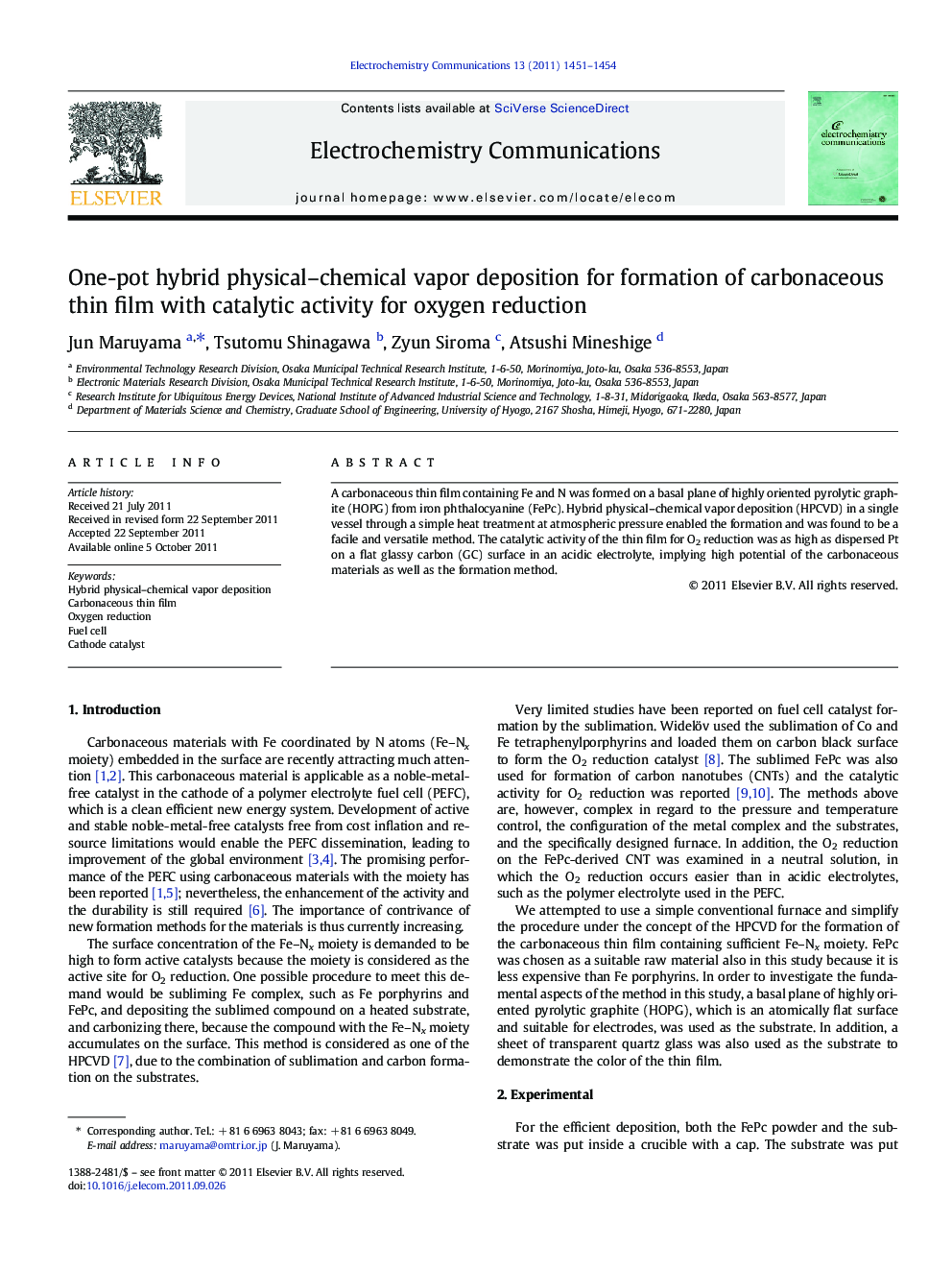| Article ID | Journal | Published Year | Pages | File Type |
|---|---|---|---|---|
| 180250 | Electrochemistry Communications | 2011 | 4 Pages |
A carbonaceous thin film containing Fe and N was formed on a basal plane of highly oriented pyrolytic graphite (HOPG) from iron phthalocyanine (FePc). Hybrid physical–chemical vapor deposition (HPCVD) in a single vessel through a simple heat treatment at atmospheric pressure enabled the formation and was found to be a facile and versatile method. The catalytic activity of the thin film for O2 reduction was as high as dispersed Pt on a flat glassy carbon (GC) surface in an acidic electrolyte, implying high potential of the carbonaceous materials as well as the formation method.
► Carbonaceous thin films were formed from iron phthalocyanine (FePc). ► FePc sublimation, deposition and concurrent carbonization occurred in one vessel. ► The carbonaceous thin film contained Fe–Nx moiety. ► The carbonaceous thin film showed catalytic activity for O2 reduction. ► The activity was as high as dispersed Pt on glassy carbon in an acidic electrolyte.
